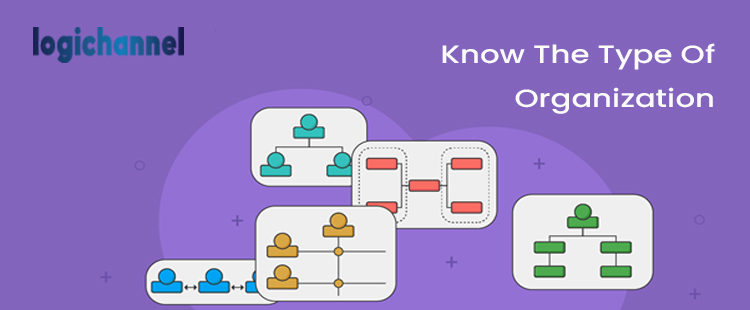According to Gartner, a typical B2B solution buying group can include 6 to 10 decision-makers in the complex world of B2B sales. These stakeholders all have their own perspectives, personalities, issues, and priorities, which can sometimes come into conflict. The journey for both B2B buyers and sellers has become more difficult than ever before as a result of these challenges.
Finding all of the key players in the company’s purchasing process isn’t easy, and getting them to agree on anything is even more difficult. In this article, we’ll walk you through the stages of identifying decision-makers in any firm.
What Is a Decision Maker, and How Do You Define Person?
In an organization or business, a decision-maker is someone who is in charge of making important decisions. These are typically executives or other high-ranking employees in a company who has the authority to make decisions on their own or with a small group of people, making them the people you should speak with if you want to sell to that company.

This person should ideally be a C-level executive who has the authority to not only approve the sale but also sign the check for the products or services, reducing the number of people you need to get approval from and speeding up the process.
Essential Steps for Identifying the Right Decision Maker
It’s just as important to prepare for the sales process as it is to execute it in B2B sales. It might be claimed that even the best sales methods will fail to generate results if they are not properly prepared.
The steps outlined below will help you approach any firm with more confidence, recognizing not only who the decision-makers are, but also how to increase your chances of getting through to them and closing the deal.
Know The Type Of Organization
Each B2B industry has its own distinct characteristics. Even if there are many similarities, it is the tiny variations that can set you apart from the competition and allow you to pinpoint decision-makers with more accuracy.

As a result, you should strive to obtain as much information as possible about the usual companies you want to work with before diving into the individual company you want to target. This will give you a better idea of who you should speak with, how to recognize them, and where to begin your research.
You should be able to develop a complete profile of how your ideal clients operate, their internal structure, and which people are more likely to act as gatekeepers versus those who actually make things happen over time. You’ll be able to discover patterns that provide more in-depth insights while also making you appear more informed and trustworthy when interacting with each prospective client if you look at the broader picture.
Identify Key Decision-Makers
According to B2B Marketing’s research, 97 percent of B2B decision-makers already know which vendor they want before the selection process even starts. This may appear to be an enormously high percentage, but the notion that pre-engagement is critical in sales is sound. One of the most critical B2B sales operations is identifying and engaging the proper stakeholders.

Businesses are a network of stakeholders with varying objectives, responsibilities, and power levels. B2B sales professionals that succeed understand how important it is to navigate this minefield. According to intriguing research from Gartner, average and poor sales teams make several common blunders.
Determine Your USP
It’s not just about identifying decision-makers; it’s also about knowing how to grab their attention and pique their interest in what you’re saying. And it is at this point that having a robust and well-crafted unique sales proposition (USP) becomes an amazing resource. The most important thing to remember about your USP is that it isn’t something you can figure out once and apply to all of your marketing and sales efforts. Even if the essence of what sets your company apart remains the same, how you present it and even which aspects you emphasize can differ dramatically depending on who you’re dealing with.

However, as you learn more about the companies you want to target, you’ll learn about the challenges they face. And it will serve as the foundation for developing a unique selling proposition (USP) that will help you connect with key decision-makers and set your firm out from the competition. If the company you’re targeting has multiple decision-makers, having a clearly defined USP will help you figure out who to approach first and how to make them your biggest active support within the company.
Create a Detailed Persona
The information mentioned above should serve as a great starting point for researching the individual clients you wish to target. Once you’ve identified a company to sell to, you can begin creating a buyer persona for the individual who will be the most likely decision-maker based on the data you’ve gathered. Even while the particular elements can vary greatly, there are some common threads that can be used to create a character and match it to someone who you believe can make a purchasing choice.

We’ve already discussed how a job title alone isn’t always a trustworthy indicator of who the decision-maker is. However, once you have a good understanding of the company’s structure, the job title might help you remove a lot of people. If at all possible, try to figure out who will be in charge of the budget, as this is a critical responsibility if you want a smooth and frictionless sales process.
Conclusion
Not talking to the real decision-maker is one of the most typical reasons for negotiations falling through. The main impact of this inability to reach the purchasing process’s key person is a significant lengthening of the sales cycle. Reaching decision-makers is a matter of timing: to engage decision-makers in a systematic manner, the timing must be perfect.
When it comes to reaching decision-makers, salespeople must succeed at all costs. They must meticulously plan their request. Otherwise, they run the risk of being overlooked. To summarise, reaching the decision-maker necessitates specific technical labor and exceptional abilities. Fortunately, a sales force evaluation may help you identify opportunities for improvement. This evaluation will establish whether your sales professionals are selling at the appropriate corporate level and are able to reach the appropriate person.






